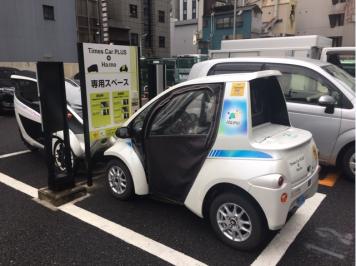 Industry analysts are fond of painting terrifying pictures of catastrophic market changes resulting from disruptive technologies or business models. Nowhere is this more evident, of late, than in the automotive industry where everything from artificial intelligence to automated driving is expected to upend current thinking about transportation.
Industry analysts are fond of painting terrifying pictures of catastrophic market changes resulting from disruptive technologies or business models. Nowhere is this more evident, of late, than in the automotive industry where everything from artificial intelligence to automated driving is expected to upend current thinking about transportation.
A recent Bloomberg headline says it all:
– “Here is the Future of Car Sharing, and Car Makers Should be Terrified” – Bloomberg
Not so fast, Bloomberg.
The arrival of Tesla Motors on the automotive scene in the U.S. more than six years ago and the successful introduction of the Model S brought a tsunami of forecasts including the demise of dealers, the decline of the internal combustion engine, the devastation of the industry’s mechanically-oriented supply chain, and the fall of independent repair shops and gas stations.
Hasn’t happened.
The arrival of Uber brought prodigious predictions of the end of vehicle ownership and parking garages.
Not exactly.
Zipcar stimulated visions of universal ad hoc vehicle usage undermining rental car companies, car makers and taxis alike.
Nope.
There are two challenges at work – one is to avoid extrapolating from a singular use case scenario, the other is not to overlook consumer resistance to change. As the saying goes, the more things change the more they stay the same.
The Bloomberg report focuses on the performance of Russian tech leader and search engine Yandex and its popular though unprofitable ride hailing and car sharing services. From a distance Yandex would appear to be a massive success story on the mobility landscape. The reality is that the company has bought its way to prominence with deeply discounted alternatives to taxis and owned vehicles.
Car sharing is nothing new, having been introduced decades ago before gaining popularity and market presence with the launch of Zipcar in the U.S. in 2000 and Autolib in Paris in 2011. The widespread support, awareness and adoption of car sharing is good. The lack of parabolic growth is bad.
As in the case of usage-based insurance, once the early adopters of car sharing are skimmed off wider adoption tails off. Yandex has sought to overcome this anemic growth profile by flooding Russian cities such as Moscow with thousands of vehicles available for use at the equivalent of 8 cents a minute – one-fifth the rate of operators such as Car2Go. Not surprisingly, the service has caught on.
Yandex’s dearly bought success in Russia is offset by apparent consumer indifference in China – where interest in car sharing is overwhelmed by the availability of ride hailing alternatives – and, in Paris, Autolib’s demise after failing to turn a profit.
Car companies can see that car sharing has yet to demonstrate the staying power that would be implied by operational profitability. One exception can be found in Japan where Park24 has combined a dominant presence in the parking industry with its own massive fleet of sharable cars.
Park24 claims to be the only profitable car sharing company on the planet and the business model warrants closer scrutiny. Founded in 1971, Park24 is the world’s largest parking company with more than one million parking spaces under its control (590K in Japan and 540K overseas) – commanding more than 54% domestic market share overseeing 18K parking facilities and 6.5M Times Club members – accessing vehicles strategically positioned near transportation hubs.
Park24’s profitable platform and Yandex’s fire sale pricing perfectly capture the quandary of assessing prospects in the car sharing business. Growth is uneven. Profitability is rare. Long-term prospects are unclear.
Car sharing clearly poses only a minor existential threat to car makers. So, the Bloomberg headline misses the mark. Some car makers see car sharing as an opportunity.
Strategy Analytics research has shown that the most frequent users of both ride hailing and car sharing services are strong self-indicated candidates for car ownership. This is one reason car makers support both alternatives (sharing and hailing) to vehicle ownership in the interest of influencing future customers.
Car sharing is less an imminent threat to car makers than it is a lead generating opportunity for them. In the end, ride hailing and car sharing both represent scenarios where a transportation challenge is being solved with a car – and that is good news for car makers.
As for car sharing’s growth prospects, the Park24 model suggests there may be as yet unexplored paths to profitability and wider adoption. Renewed growth can be expected to come from new startups bringing new thinking to the car sharing model. As one might say in these circumstances: “There’s a pony in here somewhere.”
Share this post via:







Quantum Computing Technologies and Challenges